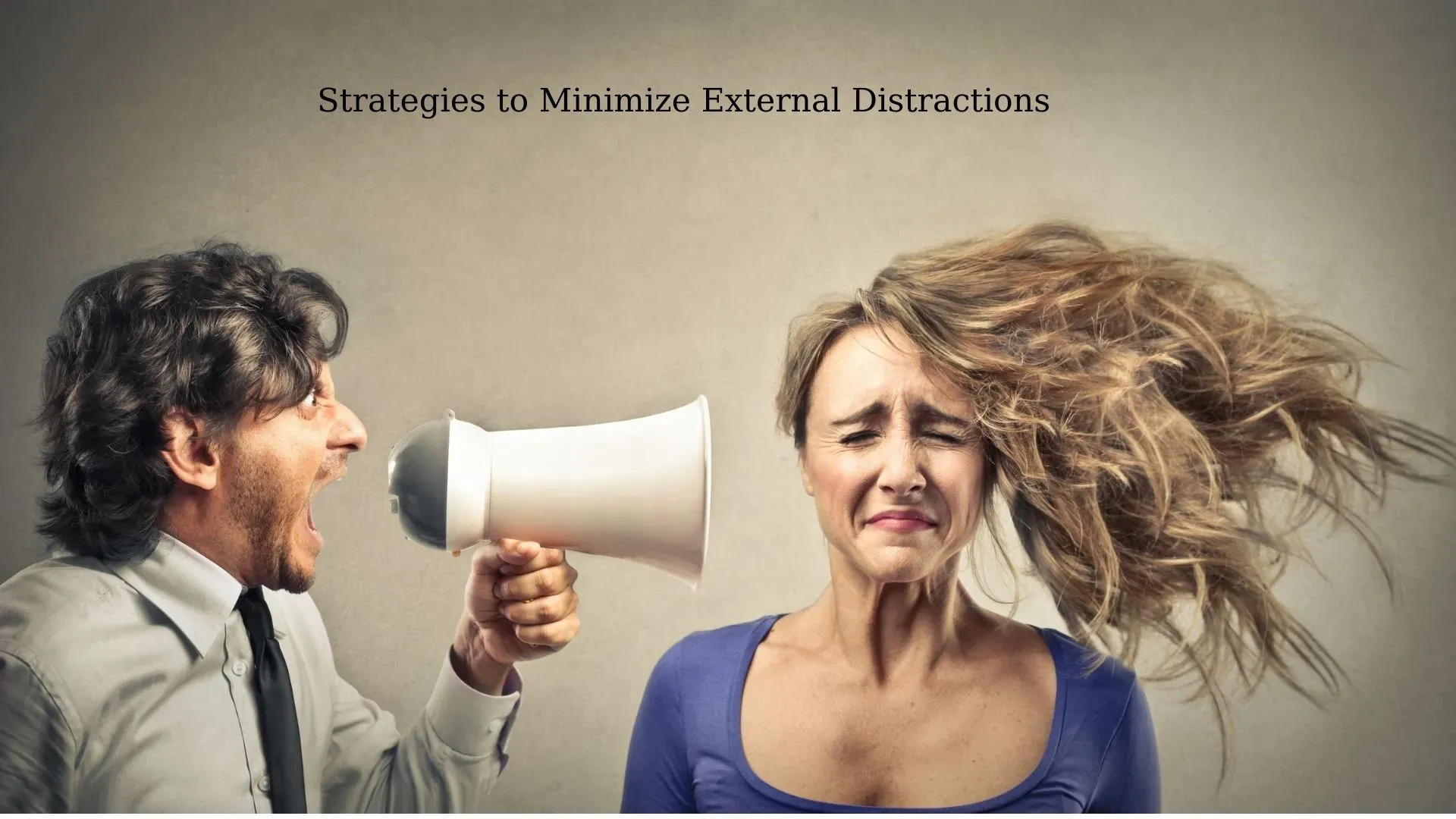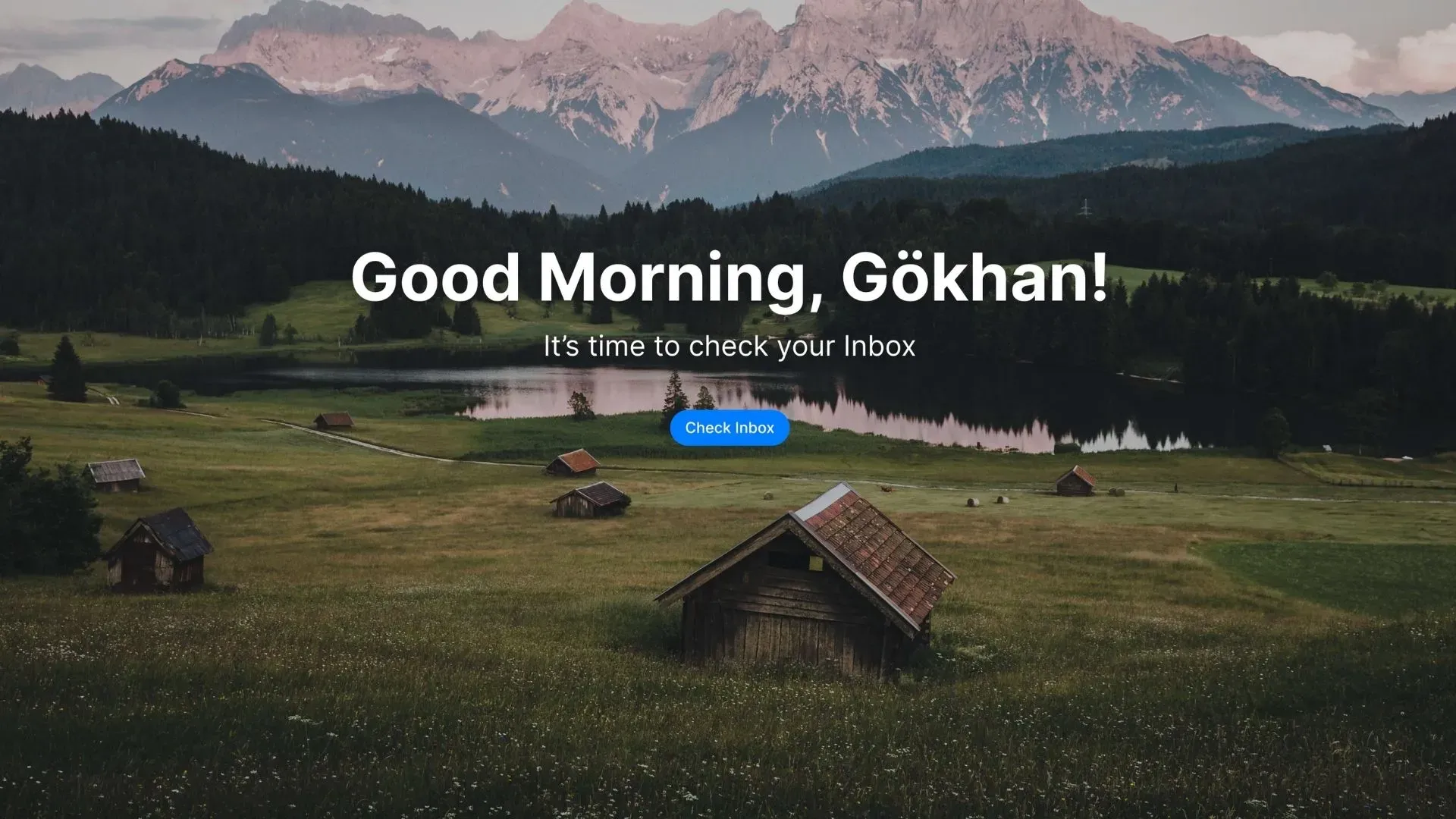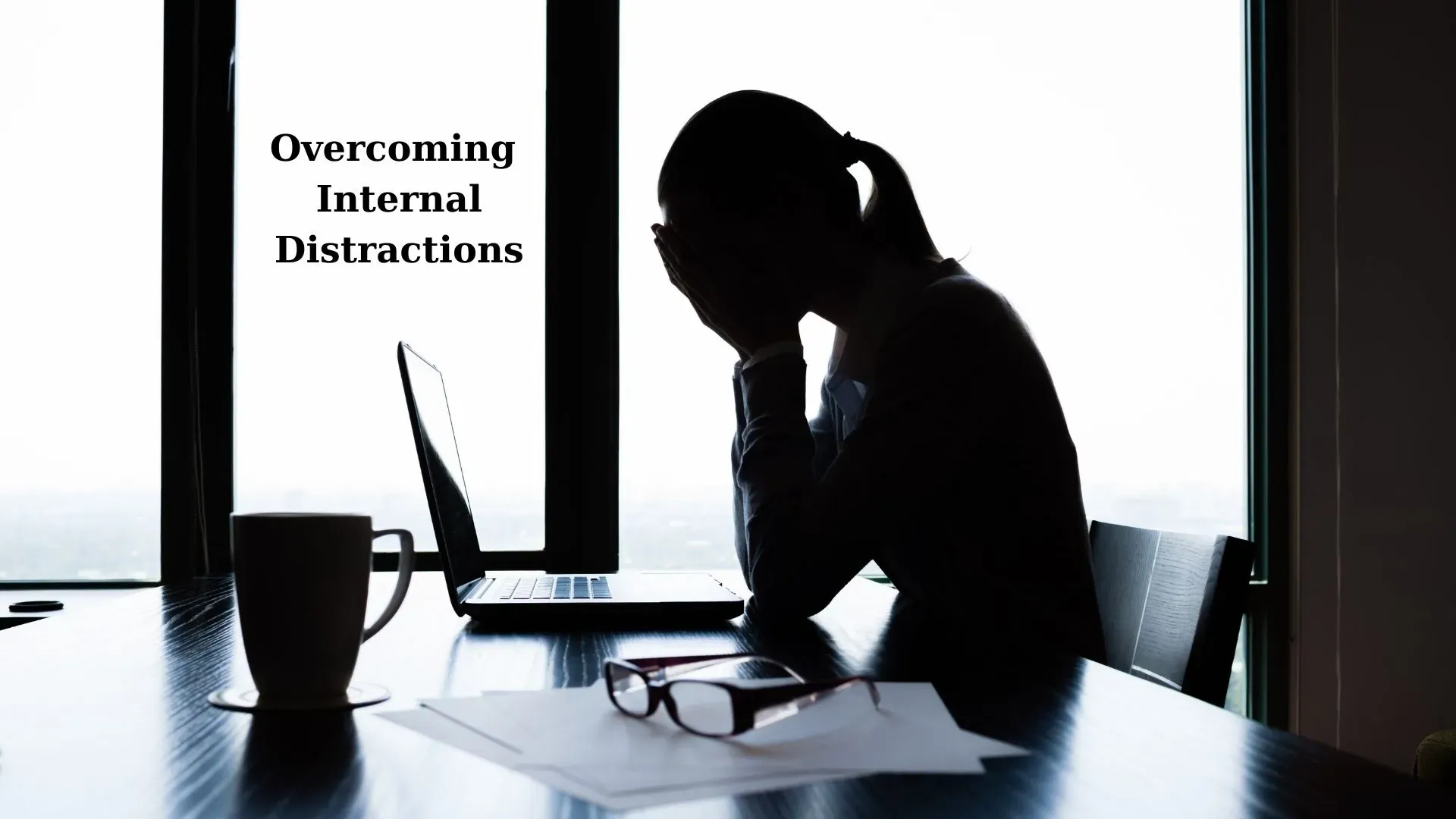FOCUS BETTER AND BEAT DISTRACTIONS: PROVEN METHODS FOR SUCCESS

We’ve all been there: you’re in the middle of a crucial task, and suddenly, your phone buzzes.Your focus is gone. What was supposed to be a quick glance at a message turns into a 20-minute social media spiral. Or perhaps you sit down to work, but you got an important call, email or a question from customer. Distractions are everywhere, and in our hyper-connected world, they seem to be multiplying.
For me, distractions used to be the bane of my productivity. Whether it was the constant ping of notifications, the lure of a new article ı saw, or just the everyday interruptions of life, I found myself constantly battling to stay focused. And I’m not alone. Research shows that frequent interruptions not only break our concentration but also lead to increased stress, frustration, and time pressure【source】. That’s a lot of added pressure that can make our workdays even more challenging.
But it doesn’t have to be this way. By understanding the nature of distractions and implementing effective strategies to manage them, we can reclaim our focus and boost our productivity. In this article, we’ll explore what distractions are, how they impact our work, and most importantly, practical tips and techniques to minimize them. Let’s dive in and take the first step towards a more focused, productive day.
1. UNDERSTANDING THE NATURE OF DISTRACTIONS
What Are Distractions?
Distractions are any stimuli that divert our attention away from the task at hand. They can be external, like a noisy environment or incoming notifications, or internal, such as daydreaming or stress. Understanding the types and sources of distractions is the first step in learning how to manage them effectively.
External Distractions
External distractions are factors in our environment that interrupt our focus. Common external distractions include:
Technology and Notifications: Smartphones, social media, email alerts, and instant messages.
Noise and Interruptions: Background noise, conversations, and unexpected interruptions from colleagues or customers.
Clutter and Disorganization: A messy workspace can be visually distracting and make it harder to find necessary items.
Internal Distractions
Internal distractions originate from within us and can be just as disruptive as external ones. They include:
Stress and Anxiety: Worrying about upcoming deadlines, personal issues, or other stressors can pull your attention away from your work.
Daydreaming and Mind Wandering: It’s easy to get lost in thought, especially during tasks that require less mental effort.
Fatigue and Lack of Motivation: Being tired or uninterested in the task at hand can lead to frequent mind-wandering and lack of focus.
The Impact of Distractions on Productivity
Distractions do more than just break our concentration; they can significantly affect our overall productivity and well-being. When we are frequently distracted, we not only lose time but also the mental energy needed to refocus on our tasks.
Understanding the nature and impact of distractions is crucial for developing strategies to manage them. By recognizing both external and internal distractions, we can start to address them systematically and create a more focused and productive work environment.
2. IDENTIFYING YOUR DISTRACTIONS
Personal Audit
The first step in managing distractions is identifying what distracts you the most. Conducting a personal audit can help you become aware of the specific distractions that interrupt your work. Here’s how to get started:
1. Track Your Activities: For one week, keep a log of your daily activities. Note each time you get distracted, what the distraction was, and how long it took you to get back on track.
2. Analyze Patterns: At the end of the week, review your log to identify patterns. Are there specific times of the day when you’re more prone to distractions? Are certain types of tasks more likely to be interrupted?
Common Culprits
While each person’s distractions can be unique, some common culprits tend to affect most people. Here are a few to watch out for:
Smartphones: Notifications, messages, and social media can be major distractions. Even a quick glance can lead to minutes or even hours of lost productivity.
Emails: Constantly checking and responding to emails can break your concentration and interrupt your workflow.
Noise: Background noise from conversations, traffic, or household activities can disrupt your focus, especially if you work in a noisy environment.
People: Interruptions from colleagues, family members, or customers can pull you away from your work. Even well-meaning interactions can be distracting.
Clutter: A cluttered workspace can be visually distracting and make it harder to find the tools and materials you need to stay productive.
Self-Assessment Questions
To help identify your primary distractions, ask yourself the following questions:
1. When do I feel most distracted during the day?
2. What activities do I find myself doing instead of my work?
3. Which tasks do I tend to procrastinate on, and why?
4. What environmental factors contribute to my distractions?
5. How do I feel physically and mentally when I’m trying to focus?
Technology and Tools
Several tools can help you identify and manage distractions. Consider using:
Time-Tracking Apps: Tools like RescueTime or Toggl can help you see where your time goes and identify patterns in your distractions.
Focus Apps: Apps like Focus@Will or Brain.fm or Endel which is my choose, provide background music designed to enhance concentration and reduce distractions.
Website Blockers: Extensions like StayFocusd or app block if you are mac user,can block distracting websites and apps during work hours.
By taking the time to identify your distractions, you’ll be better equipped to tackle them head-on. Understanding when and why you get distracted is crucial for developing strategies to minimize these interruptions and maintain your focus.
3. STRATEGIES TO MINIMIZE EXTERNAL DISTRACTIONS

External distractions are often the most obvious and can be particularly disruptive. Fortunately, there are several effective strategies to minimize them and create a more focused work environment.
Creating a Distraction-Free Workspace
A well-organized and dedicated workspace can significantly reduce external distractions. Here’s how to set one up:
Choose a Dedicated Work Area: If possible, designate a specific area for work. This helps mentally separate work from leisure and signals to others that you are in work mode. That means do not eat on your office table.
Declutter Your Space: Keep your workspace tidy. A clean, organized desk can reduce visual distractions and help you focus better.It also motivates you.
Optimize Lighting and Ergonomics: Ensure your workspace is well-lit and comfortable. Proper lighting and an ergonomic setup can improve focus and reduce physical discomfort.
Managing Technology
Technology is a double-edged sword when it comes to productivity. While it offers incredible tools, it also brings a plethora of distractions. Here’s how to manage it effectively:
Disable Non-Essential Notifications: Turn off notifications for non-essential apps on your phone and computer. Only allow alerts from critical apps that are necessary for your work.
Use Focus Mode or Do Not Disturb: Most smartphones and computers have a focus mode or Do Not Disturb feature.For example, I use focus modes on my iPhone, Mac, iPad, and even my Apple Watch Ultra. I’ve set up custom modes like “Work,” “Sleep,” “Fitness,” “Kids,” “Driving,” and “Personal.” Each mode features specific screens, app restrictions, call blocks, and scheduled notifications. This tailored setup ensures I only access what I need at any given time. It’s even location-based, so whenever I arrive at the office, everything automatically shifts to “Work” mode, keeping me focused and ready to dive in. Use these during work hours to minimize interruptions.
Set Specific Times for Checking Emails and Social Media: Instead of constantly checking emails and social media, designate specific times for these activities. This helps prevent them from interrupting your workflow. For this, I use Spark Mail. Since I manage more than six email accounts, I receive a high volume of emails. Spark Mail has a handy feature for setting a home screen, allowing me to check emails only at specific times. In my case, I check emails every three hours. This helps prevent them from interrupting your workflow.

Setting Boundaries for focus
Setting boundaries with the people around you is crucial for minimizing interruptions. Here are some tips:
Communicate Your Availability: Let colleagues, family members, and friends know your work hours and when you are available for interruptions. Clearly communicating your schedule can help reduce unexpected distractions.
Use Visual Cues: Simple visual cues, like a “Do Not Disturb” sign on your door or wearing headphones( that’s my choose), can signal to others that you are in focus mode and not to be disturbed.
Schedule Breaks for Social Interactions: Instead of allowing constant interruptions, schedule specific break times when you can interact with others. This way, you can focus during work periods and be available during breaks.
Tools and Techniques for focus
Several tools and techniques can help manage external distractions effectively:
• Noise-Canceling Headphones: If you work in a noisy environment, noise-canceling headphones can help block out background noise and keep you focused.
• Background Music or White Noise: Some people find that background music or white noise can help drown out distracting sounds. The app ı previously mentioned offers curated playlists designed to enhance concentration.
• Time Management Techniques: Techniques like the Pomodoro Technique (Endel also has this feature), which involves working for 25 minutes and then taking a 5-minute break, can help maintain focus and reduce the impact of external distractions.
By implementing these strategies, you can create a more distraction-free work environment, allowing you to maintain focus and enhance your productivity. Reducing external distractions is a crucial step towards achieving a more efficient and productive workday.
4. OVERCOMING INTERNAL DISTRACTIONS

Internal distractions can be just as disruptive as external ones, if not more. These distractions come from within and often require different strategies to manage effectively. Here’s how to tackle them:
Mindfulness and Focus Techniques
Mindfulness and focus techniques can help you stay present and reduce the impact of internal distractions. Here are some methods to try:
• Mindfulness Meditation: Practicing mindfulness meditation can improve your ability to focus and reduce mind-wandering. Start with just a few minutes each day, focusing on your breath and bringing your attention back whenever it drifts.You can use Headspace(my favourite for beginners), calm or Meditopia (has Turkish language)
Deep Breathing Exercises: Simple deep breathing exercises can help calm your mind and refocus your attention. Try taking a few deep breaths when you feel distracted or stressed.(you can use Mindfulness app of apple as free)
Body Scans: Performing a body scan, where you mentally check in with different parts of your body, can help ground you in the present moment and reduce internal distractions.(Headspace has a good space for this)
Breaking the Multitasking Habit
Multitasking is a common internal distraction that can significantly reduce productivity. It’s one of my bad habits that I am working to overcome. Even though I’ve read many studies showing that multitasking is detrimental, I sometimes feel like I’m good at it. However, I know I need to beat this habit, and that’s on me. For you, here’s how to break the habit:
Single-Tasking: Focus on one task at a time instead of trying to juggle multiple tasks. This can improve the quality of your work and help you complete tasks more efficiently.
Pomodoro Technique: The Pomodoro Technique involves working for 25 minutes and then taking a 5-minute break. This structured approach can help maintain focus and reduce the temptation to multitask.
Prioritize Tasks: Make a to-do list and prioritize your tasks. Focus on completing the most important tasks first before moving on to less critical ones. I am using things 3 appand The Eisenhower Matrix to manage tasks.
Managing Stress and Mental Clarity for focus
Stress and mental fatigue can lead to internal distractions. Here’s how to manage them:
Regular Breaks: Taking regular breaks throughout the day can help maintain mental clarity and reduce stress. Step away from your work, stretch, or take a short walk to recharge.
Healthy Lifestyle: Eating a balanced diet, staying hydrated, and getting regular exercise can improve your overall well-being and help you maintain focus.
Sleep: Ensure you get enough sleep each night. A well-rested mind is better equipped to handle tasks and resist distractions.
Using Tools and Resources for focus
Several tools and resources can help you manage internal distractions:
• Focus Apps: You can use previous apps we discussed.
Journaling: Keeping a journal can help you process thoughts and reduce internal distractions. Spend a few minutes each day writing down your thoughts and goals.I always feel more clear after morning Journaling.
To-Do Lists: Using a to-do list can help you stay organized and focused on your tasks. Apps like Todoist, things 3 or microsoft to do or google calendar tasks can be useful for managing your workload.
Developing a Routine for focus
A consistent routine can help reduce internal distractions by providing structure to your day:
Morning Routine: Start your day with a consistent morning routine that includes activities like meditation, exercise, and planning your day. This can set a focused tone for the rest of the day.
you can read my 4 essential steps for morning routine blog post
Work Routine: Establish a work routine that includes specific times for focused work, breaks, and other tasks. Having a routine can reduce decision fatigue and help you stay on track.
Evening Routine: End your day with a relaxing evening routine that helps you unwind and prepare for the next day. This can improve your sleep and reduce stress.
By addressing internal distractions with these strategies, you can enhance your focus and productivity. Overcoming internal distractions is essential for maintaining a clear, concentrated mind and achieving your goals.
5. Building a Sustainable Focus Routine
Creating and maintaining a sustainable focus routine is key to long-term productivity and well-being. Here’s how to develop habits and routines that help you stay focused and productive consistently.
Long-Term Habits
Developing long-term habits that support focus and productivity is essential for sustained success:
Consistent Sleep Schedule: Maintain a regular sleep schedule to ensure you’re well-rested and alert. Aim for 7-9 hours of sleep each night.
Healthy Eating: Fuel your body and mind with nutritious foods. Avoid heavy, sugary meals that can cause energy crashes and opt for balanced meals that provide sustained energy.
Regular Exercise: Incorporate physical activity into your routine. Exercise not only boosts your physical health but also enhances mental clarity and focus.
Mindset and Attitude for focus
Cultivating a positive mindset and attitude towards work can significantly impact your ability to focus:
Growth Mindset: Embrace a growth mindset, believing that you can improve and develop your skills with effort and practice. This mindset can help you stay motivated and resilient in the face of challenges.
Set Realistic Goals: Break down your larger goals into smaller, manageable tasks. This makes your goals feel more achievable and helps maintain your motivation.
Celebrate Small Wins: Acknowledge and celebrate your achievements, no matter how small. This can boost your morale and encourage you to keep moving forward.
Continuous Improvement
Continuously evaluate and adjust your focus routine to ensure it remains effective:
Regular Reflection: Set aside time each week to reflect on your productivity and focus. Identify what’s working well and what needs adjustment.
Seek Feedback: Don’t hesitate to seek feedback from colleagues, mentors, or friends. They can offer valuable insights and suggestions for improvement.
Adapt and Evolve: Be flexible and open to change. Your needs and circumstances may evolve, so be willing to adjust your routine to stay aligned with your goals.
By building a sustainable focus routine, you can create a foundation for consistent productivity and well-being. This routine will help you maintain focus, achieve your goals, and enjoy a balanced, fulfilling life.
CONCLUSION: RECLAIMING FOCUS AND BOOSTING PRODUCTIVITY
Distractions are an inevitable part of our modern, fast-paced world. However, by understanding their nature and impact, we can take proactive steps to manage and minimize them. From creating a distraction-free workspace and managing technology to overcoming internal distractions and building sustainable focus routines, there are many strategies we can implement to reclaim our focus and boost productivity.
First, identifying your specific distractions is crucial. Conducting a personal audit helps you understand the unique patterns and triggers that disrupt your workflow. Once you’ve identified these distractions, you can apply targeted strategies to address them.
Next, managing external distractions involves setting up a conducive work environment, using tools to limit interruptions, and setting clear boundaries with others. On the other hand, overcoming internal distractions requires techniques like mindfulness, single-tasking, stress management, and developing healthy routines that support mental clarity and focus.
Building a sustainable focus routine is key to maintaining long-term productivity. Incorporating daily rituals, developing supportive habits, cultivating a positive mindset, and continuously improving your approach will help you stay on track and achieve your goals.
Remember, productivity is not about being busy all the time. It’s about being effective with the time you have.
By implementing these strategies, you can create a balanced, focused work life that allows you to accomplish more while maintaining your well-being.
Now, it’s your turn. Start by identifying your biggest distractions and experiment with the strategies outlined in this article. Share your experiences and tips in the comments – let’s help each other stay focused and productive!






Member discussion